Roof-top Elements of Lightning Protection Systems
Lightning protection standards mandate that strike termination devices are positioned at the structure’s high points, spaced at regular intervals not exceeding 20 to 25 feet along ridges and roof perimeters, and at corners of roofs. On large buildings, the field of the roof must also have strike termination devices.
In addition, anything projecting above the roof – such as parapets, HVAC units, hatches, and solar collectors – will also require strike termination devices unless they are in the zone of protection created by a higher part of the structure.
There are two types of strike termination devices:
1. Air terminals (informally known as “lightning rods")
2. Roof-top metal fabrications complying with specific criteria
At Roof Level
Air terminals consist of a mounting base and a vertical rod. Bases should be mounted using techniques acceptable to the roofing or substrate manufacturer. Rods from a lightning rod supplier must extend a minimum of 10 inches above the object they protect. Air terminals should be located as close as practical to the roof edges and the ends of ridges however they may not be set-back more than 24 inches.
Air terminals with rounded tips have been shown to be more effective than the pointed air terminals that were commonly used in the past. The blunt-tipped rods are also safer for personnel working on the roof.
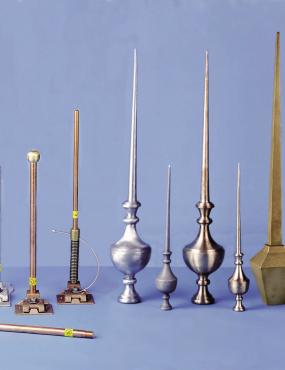
East Coast Lightning manufactures more styles of air terminals than anyone else in the industry.
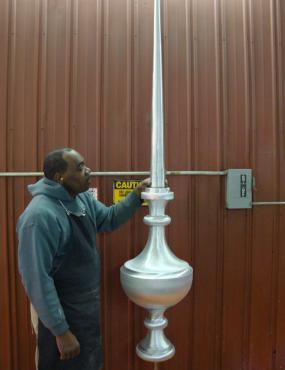
Tall, decorative finials can be used as strike termination devices.
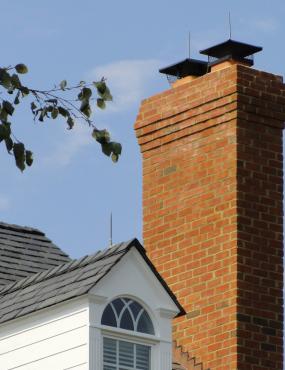
Air terminals must be installed on a building’s high points and in accordance with industry standards.
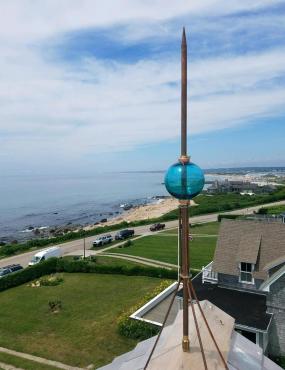
Air terminals over 24 inches tall require braces. Decorative glass balls complement many heritage styles.
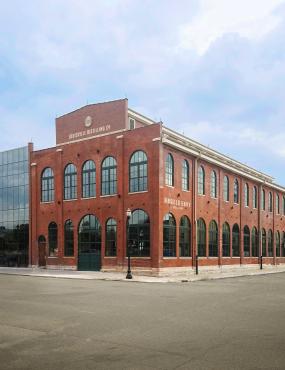
Air terminals are spaced at regular intervals no more than 20 feet apart around the roof perimeter and along ridges.
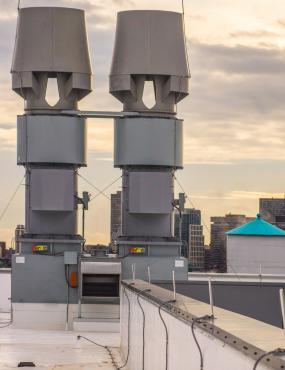
Air terminals are required on top of rooftop equipment unless it is in the zone of protection created by air terminals higher on the structure.
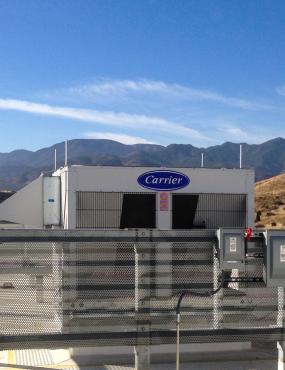
Lightning protection standards provide criteria for the placement of air terminals on rooftop equipment.
Creative Use of Rooftop Metal Fabrications
Lightning protection standards allow roof-top metal building elements to be used in lieu of air terminals if they are permanent parts of the building, electrically continuous with the lightning protection system, and made of metal at least 3/16 inch (0.064 inch for handrails) thick. Examples of such metal fabrications include metal roof ladders, parapet caps, signs, sculptures, decorative items, canopies, and more.
Getting double-duty out of these metal building features can reduce the cost of construction. It also provides aesthetic and creative options, especially for occupied roofs and other locations where people may be in close proximity to the lightning protection system.
Additional examples of creative incorporation of metal building elements into the lightning protection system can be found here and also in the article "Lightning Protection Systems on Rooftop Terraces."
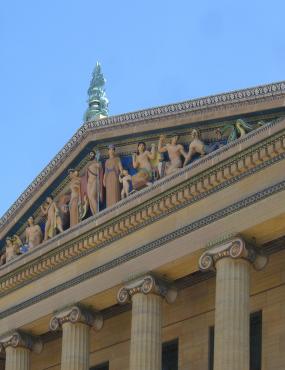
Bronze statuary is used for strike termination at the Philadelphia Museum of Art, eliminating the need for air terminals.

This famous mouse is constructed of metal and acts as the strike termination device atop this attraction.
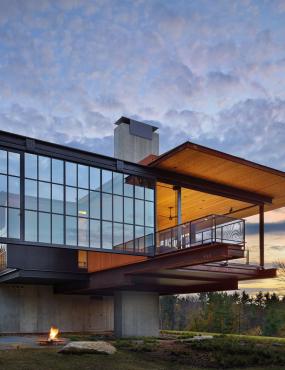
The thick metal beams supporting this home's retractable front are substituted for both air terminals and conductor.
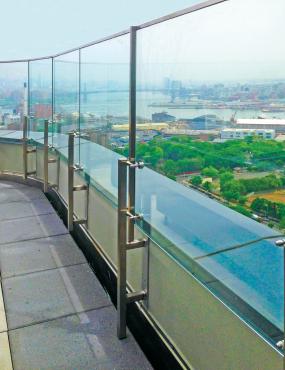
The metal railing on this rooftop pool deck was specially designed to act as strike termination and conductor.
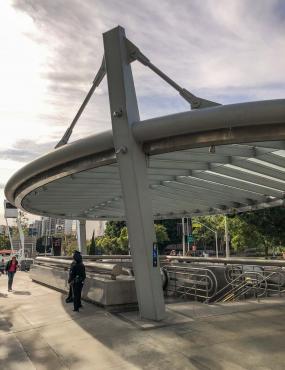
Heavy metal architecture such as this can be substituted for air terminals if properly constructed.
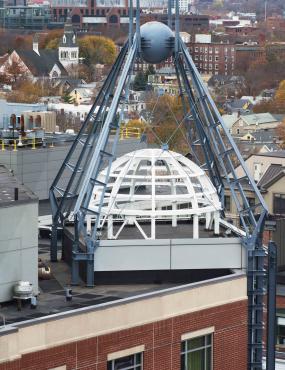
Rooftop adornments at the top of a structure can be used for strike termination is adequately sized.
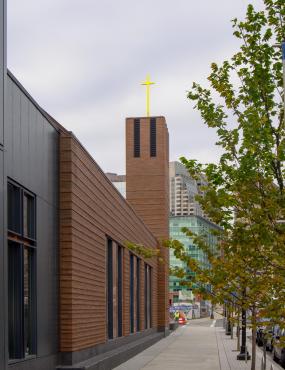
The solid metal cross replaces the need for air terminals on this modern church in Boston.
Does your building require lightning protection? Find out now!
Our Partner:

visit www.sls-us.com to learn about their suite of lightning solutions for special applications

